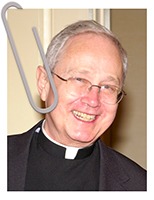We all know St. Vncent was a transformational saint who had a profound effect not only on his generation but generations to come. Think of other transformational saints – St. Paul , St. Augustine, St. Benedict, St. Thomas Aquinas, St. Francis and a host of others.
What we are rediscovering about St. Vincent in these last 20 years is his “secret sauce” for transformation. We have had the flavor of his works but lost sight of the key ingredient in all the marvelous things he accomplished for those on the margins of both church and society.
“The Confraternities of Charity”
Wednesday, August 23, 1617 seemed like a day like any other day. However, it marked the begnning of all the transformational ministries set in motion by Vincent. On that day he called a meeting of 7 women in Châtillon-les-Dombes. He suggested and they agreed to form an association to take care of the sick more effectively by taking turns doing what needed to be done.
The first Confraternity of Charity was born. But often overlooked is that this organization was the pioneering beginning of the oldest still-functioning group of women in the church (despite various name changes over the centuries).
It was actually the suggestion of a laywoman. Vincent lent his support and organizing genius. He realized that lay women were an untapped ministerial resource in the church.
It proved to be the first of many institutions he set in motion. A triangle of mutually supportive institutions: Confraternities of Charity, 1617; Priests and Brothers of the Mission, 1625; Daughters of Charity, 1633.
The establishment and support of these lay Confraternities formed the basic pastoral plan of all his missions.
Vincent not only spoke of the importance of empowering these women. He enshrined it as a commitment in the rules of the Congregation of the Mission and the Daughters.
Vincent spoke of it in his conferences.
In places where they have preached, the missionaries establish, by authority of the Ordinaries, Confraternities of Charity, as they are called, if these are needed in order to help the sick poor, and they themselves contribute something to this holy work out of their own goods (CCD:I:142).
Article I:2 of the Common Rules for the Congregation of the mission
…the ministry of the missionaries, includes, setting quarrels and disputes, establishing the Confraternity of Charity.
Reimagining the insight of Vincent’s strategy for awakening the laity
This has been a dramatic time in the life of the Vincentian Family. We have become more aware of one another. Just think of the major events in recent years… Rome – 11,000 followers of Vincent in St. Peter’s Square. Almost 200 international leaders gathered for the first time to explore collaboration.
But on this anniversary of the establishment of the Confraternities of Charity, I am struck by a still under the radar phenomenon springing up among Vincentian laity in various professions. Writers, musicians, translators, lawyers, psychologists, etc., each group interested in networking with other professionals in their field. At present, there are already 13 different groups or “professional” confraternities.
The common concern in each group is how can they use their specific professional skills to serve those who ae poor and on the margins. For the most part they are self-organizing, holding monthly discussions via Zoom. In just the last few months 13 such groups have sprung up.
In these new groups I see Vincent’s insights into the ministry of the laity re-imagined 400 year after his time.
If you are a professional interested in networking with others in your field who share your concerns contact Fr. Flavio at pereiraf@famvin.org
Click below for an audio version of this Vincentian Mindwalk


very good reflection
I’m always struck, when I read St. Vincent’s account about how the Confraternities of Charity got started, that the beginning is so closely linked to the Eucharist. I dare say that the Eucharist is its source and summit. There was a sermon that gave rise to a “procession” worthy, I believe, of the celebration of the solemnity of the Most Holy Body and Blood of Christ. I also have in mind, of course, what you say in both “Recognizing the Body of Christ Today” and “’Rubbing Shoulders’ with Jesus.”
Also, in your “The Nun Who Woke Up To the Poor At Forty,” you quote her reflection. In it she said, in part, “I didn’t want to struggle with politics and economics. We were nuns, after all, not social workers.”
Why do I go back to this? Because I’m fearful that there may still be churchmen and consecrated people who’d use such reasoning to maintain their being set apart for something far more important than just lining up with lay folks who provide for those who endure bodily miseries.